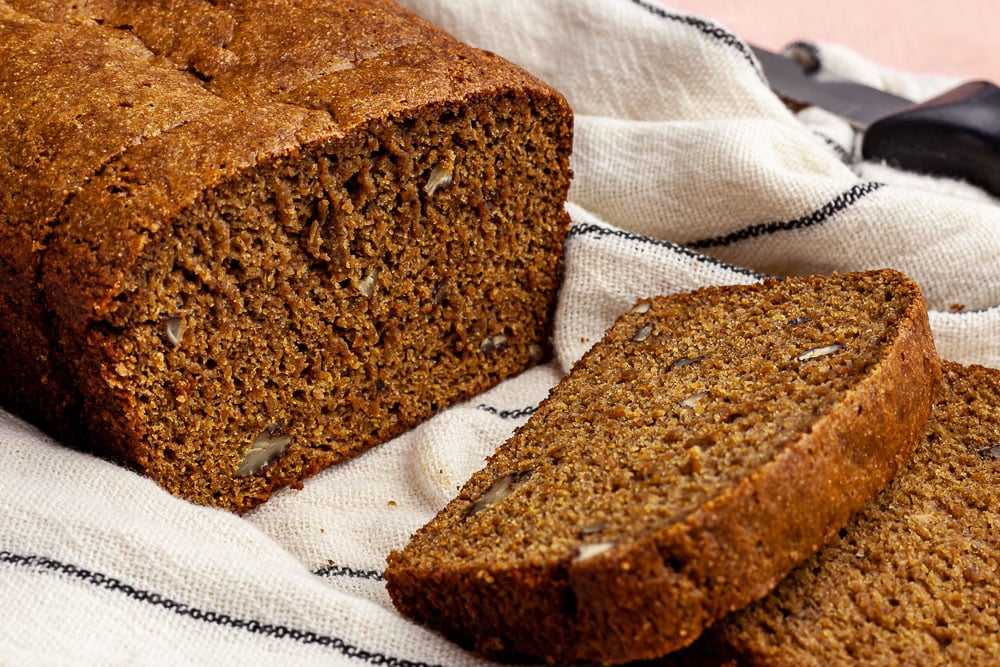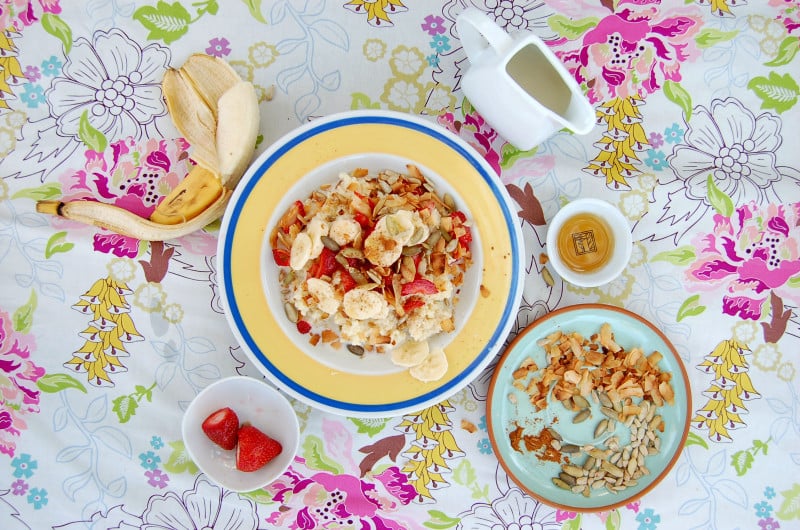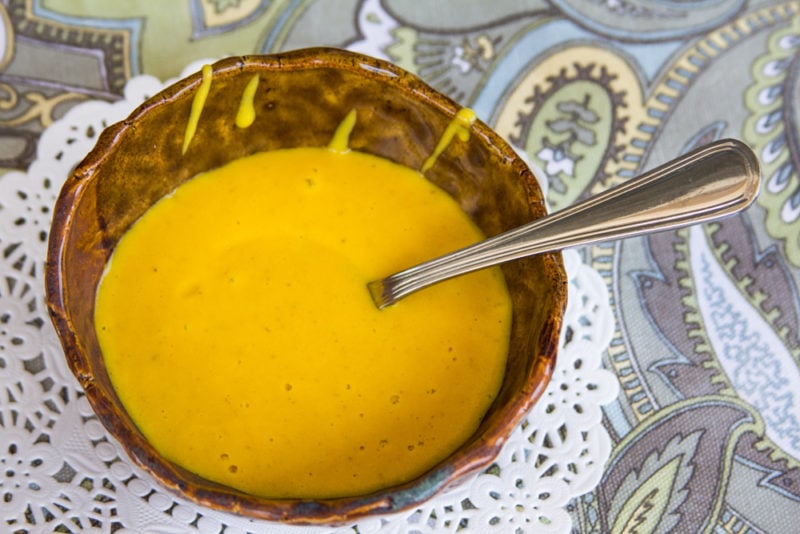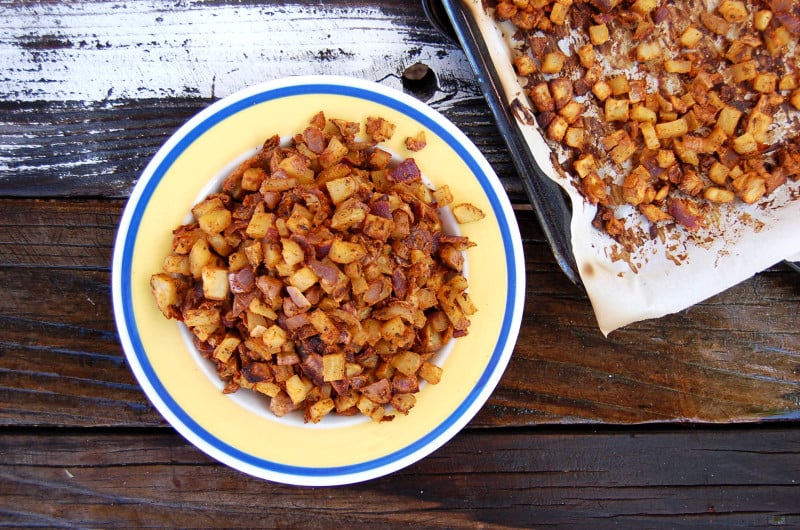By Molly Patrick
Sep 13, 2016,
By Molly Patrick
Sep 13, 2016,
Today’s Fuckery is all about iron.
Now – off the top of my head I can think of at least five things that are way more fun to chat about.
- Cat pants
- Cats
- My cats
- Tacos
- The fact that tacocat spelled backwards still spells tacocat #MindBlown
Iron is far from this list. But before you roll your eyes with boredom and click out of this post – hold on. I have a knack for making complicated, boring shit less complicated and less boring, so give me a chance. I’ll make this painless and interesting.
Game on. Let’s start her up and make this Fuckery purrrrr like a cat in a sunny window, shall we?
Iron is an essential mineral with the super important job of carrying oxygen from our lungs to the rest of our body. Not a task to be taken lightly.
There are two types of iron:
- Heme iron: Found in blood and muscle. This type of iron makes up the majority of the iron found in animal foods; meat, poultry, seafood and eggs.
- Non-heme iron: Found in plants. This is the only type of iron in plant foods; veggies, fruit, beans and legumes, whole grains, nuts and seeds.
Most people know that if we don’t absorb enough iron, we risk iron deficiency anemia. People who are anemic experience shitty things like extreme fatigue and weakness, lightheadedness, shortness of breath, rapid heartbeat, brain fog, headaches and irritability. It’s not a party when oxygen can’t get to where it needs to go.
Clearly, not getting enough iron has serious health consequences, but what most people don’t know is that the absorption of too much iron is associated with even more severe health consequences, like heart disease, certain types of cancers, type 2 diabetes, Alzheimer’s, Parkinson’s disease and arthritis (see references at the end of this post).
So yes, we need iron in our life, but we definitely don’t want too much iron in our life.
It’s all about reaching that iron sweet spot. Don’t worry – it’s not as complicated as reaching the G-Spot. Let’s take a look.
The human body has no way of discarding excess iron like it does with vitamin C or vitamin B. If we have too much C or B in our system, we just whiz it right out – no problem. This is not the case with iron. So instead of discarding excess iron, the body keeps our iron levels balanced by closely regulating how much iron is absorbed.
If we don’t have enough iron circulating in our system, the body can boost iron absorption. If we have too much iron circulating in our system, the body can decrease iron absorption. So like a total badass, we’re able to self regulate how much iron is being absorbed based on how much we have in our blood at any given moment. Fucking rad.
But get this – there’s a caveat.
This self regulating system only works efficiently with non-heme iron, the iron found in plants.
When heme iron is consumed, the type of iron in meat, poultry, seafood and eggs, the body has no way of knowing when to decrease absorption, allowing excess iron to flood into the system, causing oxidative stress and DNA damage. Ouch.
So if the diet is made up of mostly plant foods (rich in non-heme iron), our beautiful bod does an excellent job of getting us in that iron sweet spot and keeping us there – cozy, safe and sound.
On the flip side, when the diet is made up of mostly meat, poultry, seafood and/or eggs (rich in heme iron), the body doesn’t have the ability to put the brakes on iron absorption when needed. And this wreaks havoc on our system.
If iron levels are too high, the fastest and easiest way to bring them down is to stop eating heme iron (from animal foods) and replace it with non-heme iron (from plant foods). Easy peasy.
If iron levels are too low, supplementing with iron pills is a common fix.
BUT HOLD YOUR CAT PANTS!
Because of the risks associated with getting too much iron, reaching that iron sweet spot through diet is highly recommended by clued up doctors like Dr. Michael Greger, Dr. Joel Fuhrman and Dr. Neal Barnard. (though, I’m 100% sure that none of them bring up the G-Spot when talking about iron).
It’s important to know that people who don’t eat meat are not more likely to have iron deficiency anemia than people who do eat meat. In fact, healthy plant-based eaters get just as much iron as meat eaters – if not more.
The fact is, it’s entirely possible to eat lots of iron-rich animal-based foods and/or iron-rich plant foods and still be anemic. This is often because of a weakened digestive system due to celiac disease, inflammatory bowel disease or other conditions.
There are lots of different types of anemia as well – not just anemia from iron deficiency. If you think you might be anemic, talk with your doctor to get the full scoop on what’s going on with your particular case.
If you have iron deficiency anemia or your iron levels are low, here are some things that will help bring your levels up that don’t involve taking iron pills or loading up on heme iron from animal based foods.
1: These are some of the most iron-rich plant foods out there.
Eat these foods regularly:
- Leafy green vegetables (kale, chard, collard greens, spinach, mustard greens, etc.)
- Chickpeas (AKA garbanzo beans)
- Lentils
- Soy beans
- Kidney beans
- Sesame seeds and tahini (sesame seed butter)
- Quinoa
- Pumpkin seeds
- Cashews
- Almonds
- Dried prunes
- Dried apricots
2: Vitamin C helps the body to absorb non-heme iron up to six-fold, so try to eat iron-rich plant foods along with foods that are loaded with vitamin C.
Here are some of the most vitamin C packed foods to choose from:
- Papaya
- Bell peppers
- Broccoli
- Brussels sprouts
- Kiwi
- Pineapple
- Oranges
- Grapefruit
- Strawberries
- Parsley
- Cauliflower
This can be as easy as having a couple of orange slices along with your hummus, garnishing your lentils with parsley, or adding strawberries to your leafy green smoothies. When you eat a Whole-Food Plant-Based diet, pairing foods rich in vitamin C with foods rich in iron is super easy and you have a ton of delicious options.
Note – Taking vitamin C in pill form does not have the same iron absorbing effect as actually eating foods that are high in vitamin C. Always bet on the food, not the isolated nutrient in pill form. The body knows what to do with food, not pills.
3: Just like vitamin C, eating alliums along with iron-rich plant foods helps the body absorb iron.
Here are some alliums to choose from:
- Garlic
- Onions
- Leeks
- Green onions/spring onions
- Chives
- Shallots
Again, you don’t have to think about this too much if you follow a healthy plant-based diet or if you get my Plant Fueled Meal Plans. This is naturally built into this way of eating.
4: Just like there are some foods that help the body absorb iron, there are also things that block iron from being absorbed.
If your iron is low, do not consume the following items with your iron-rich meals:
- Coffee
- Tea
- Dairy
5: Some people swear by using cast iron pans to cook their food as a way to up their iron levels, but I wasn’t able to find conclusive data to back this up.
That said, cast iron pans are my favorite pans to cook with, so if your iron is low, it doesn’t hurt to swap out your pans with cast iron and give it a shot. No harm will come from it if it doesn’t work.
Start with these things, give it some time and see what happens.
I’m going to land this baby by reminding you that all of your iron needs can easily be met by eating a plant-based diet, rich in non-heme iron. You just have to make sure that you eat a wide variety of whole plant foods.
My weekly Plant Fueled Meal Plans give you all of the plant-rich iron that you need – you just have to follow along. And the brilliant part is, once you get enough iron, your clever bod puts on the brakes and you will never get too much. This is awesome because avoiding oxidative stress is a super good idea if you want to be energized and healthy for a long ass time to come.
Okay – you’re now free to go forth into the world and find your iron sweet spot (or your G-Spot – you could do that too. What you do with your “spot” is entirely up to you).
If you want to join our Plant Fueled Meal Plans, do that here.
Today’s recipe is almost as magical as cat pants.
This dressing goes well with pretty much everything and it’s loaded with iron from the cashews. Make a big leafy green salad, top it with grapefruit chunks and sliced bell pepper and drizzle with dressing. Your iron levels will be on the rise in no time.

Ingredients
- ½ cup raw cashews 70g, soaked in water for at least 10 minutes
- 2 tablespoons packed fresh mint leaves about 10g
- 1 garlic clove peeled and left whole
- 1 generous teaspoon peeled and chopped ginger
- 1 tablespoon rice vinegar
- 1 teaspoon Coconut Aminos
- ½ teaspoon salt
- ½ cup water 120ml
Instructions
- Drain the cashews and discard the water.
- Place the cashews in your blender, along with the mint, garlic, ginger, rice vinegar, Coconut Aminos, salt and water.
- Blend until totally creamy and smooth.
Wishing you a happy week. May it be filled with plenty of non-heme iron, cat pants, and tacos. And perhaps even a G-Spot.
References:
Iron, Meat & Health
Mechanisms of heme iron absorption
Iron & vegetarian diets
Risk associate with iron supplements
The safety of heme vs non-heme iron
1 Comments
Leave a Comment
You may also enjoy...
Love the food that loves you back
Get instant access to thousands of plant-based recipes and meal plans, no credit card or perfection required.





















Hi Molly,great article as always!! When you say: If your iron is low, do not consume the following items with your iron-rich meals: coffee,tee and dairy by tee do you mean black tee or herbal tee as well?Thank you!